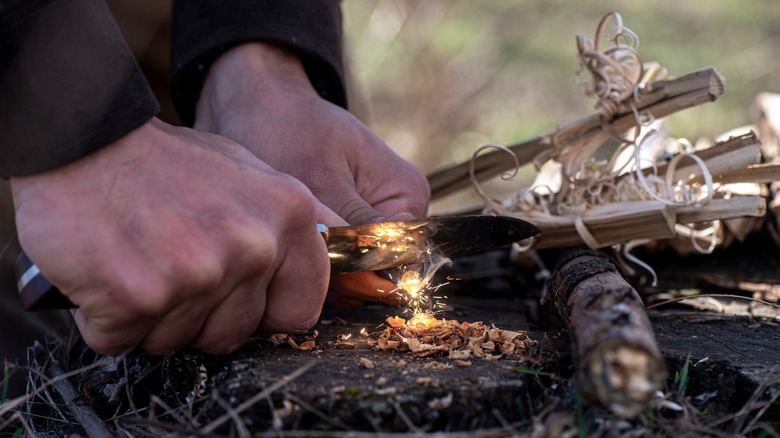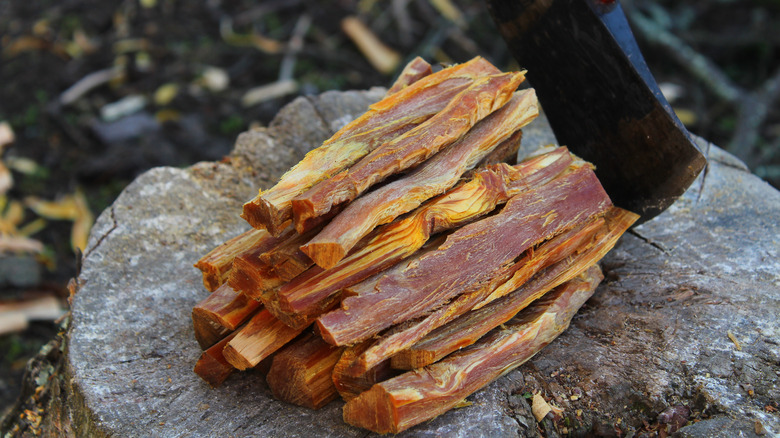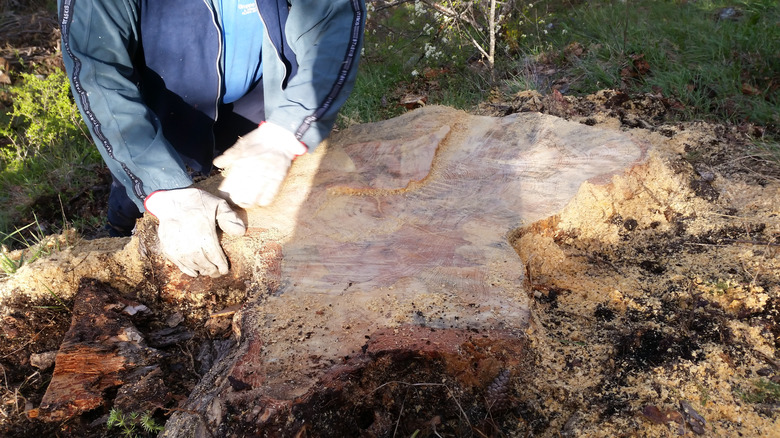What Is Fatwood & How To Find It For Your Campfire
A campfire is an essential element to the camping experience. Whether it be for cooking campfire meals, keeping warm, drying clothes, or just to provide ambience, it is hard to imagine camping without a fire. However, at times, starting a fire while camping can be a bit of a challenge. That is why many seasoned campers speak of fatwood in a reverent tone typically reserved for items other than a simple fire starter. That's because those who are experienced with fatwood consider it to be something of the Holy Grail of fire starters. It is roundly considered the best all-natural fire starter.
Those hoping to build the perfect campfire will appreciate the fact that fatwood is also the fastest and easiest way to light a campfire without using chemical-based or enhanced products. While fatwood is commercially available through both local companies and national merchandisers, it is also easy for DIY campers to gather and prepare for themselves. But, in order to do so, you need to know where and what to look for when searching for this highly sought-after tinder. So, that begs the question -– what is fatwood and how do you find it for your campsite?
What is fatwood?
To know what to look for when on a fatwood-gathering excursion, you first must know what fatwood is and what type of trees create it. Fatwood comes from pine trees. Despite its name, most fatwood is not full of fat. Rather, it is full of resin. Those familiar with pine trees can attest to the sticky substance that is often found oozing from these trees. According to the US Forest Service, not all sap is resin and not all trees produce resin. Pine trees, among several other conifer trees, are resin-producing plants. A primary component of pine tree resin, or pitch, is terpene, which is used to make turpentine. This is what gives fatwood its highly flammable characteristics.
While fatwood comes from pine trees, not all pine wood is fatwood. Fatwood is dried portions of a pine tree that has a very high concentration of resin. Most often this resin is found in highly concentrated portions of dead pine trees or dead limbs on living trees. This is because these are the areas the resin tends to concentrate in when a pine tree dies. It is easy to tell fatwood apart from the rest of the pine wood, as the dense concentration of resin gives it a darker appearance and harder feel.
How to find and prepare fatwood for your campfire
Fatwood can be gathered in a few different ways. If you are camping in an area that has a lot of pine trees, you may be able to find an adequate amount around your campsite. You can also spend time ahead of camping excursions finding and preparing fatwood for your campfire. While bringing firewood to campsites is typically frowned upon, fatwood prepared as a fire starter is considered okay, as the resin prevents bug infestation.
If you are looking to find fatwood while camping, look for fallen trees. Small branches protruding from the tree trunk will often store resin. Limbs that are an inch or two in diameter are ideal. Be sure the tree that has been dead long enough to adequately dry. Cut the limb off at the juncture with the trunk. Peel away all of the bark and soft, white wood until you are left with just the darker fatwood. Any leftover pieces can be saved for later use.
This method is also a good way to harvest fatwood for future trips. But, if you want to stock up, the best way to get a bounty of fatwood is to find a dead pine tree stump. Cut the top section of the stump, then split it with a hatchet or chainsaw to expose the fatwood center. Next, using a hatchet, sturdy knife, or machete to hack off pieces that are about a half-inch thick.


